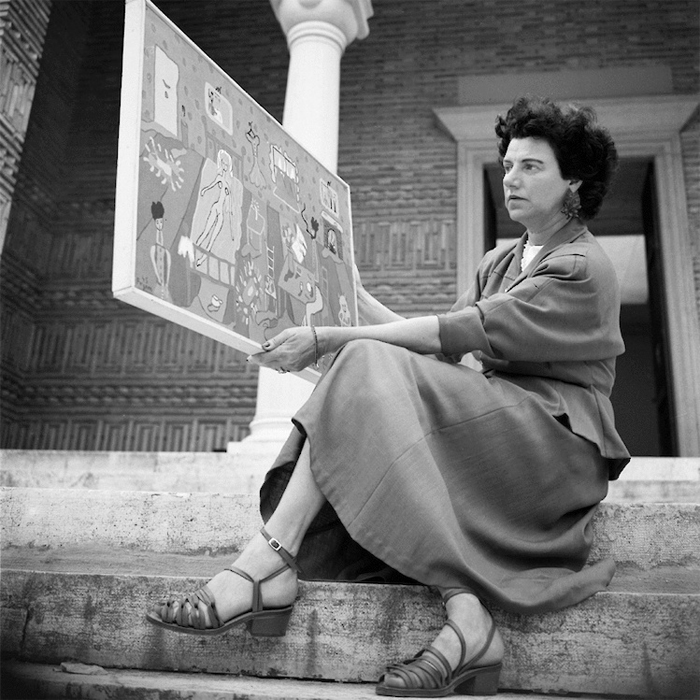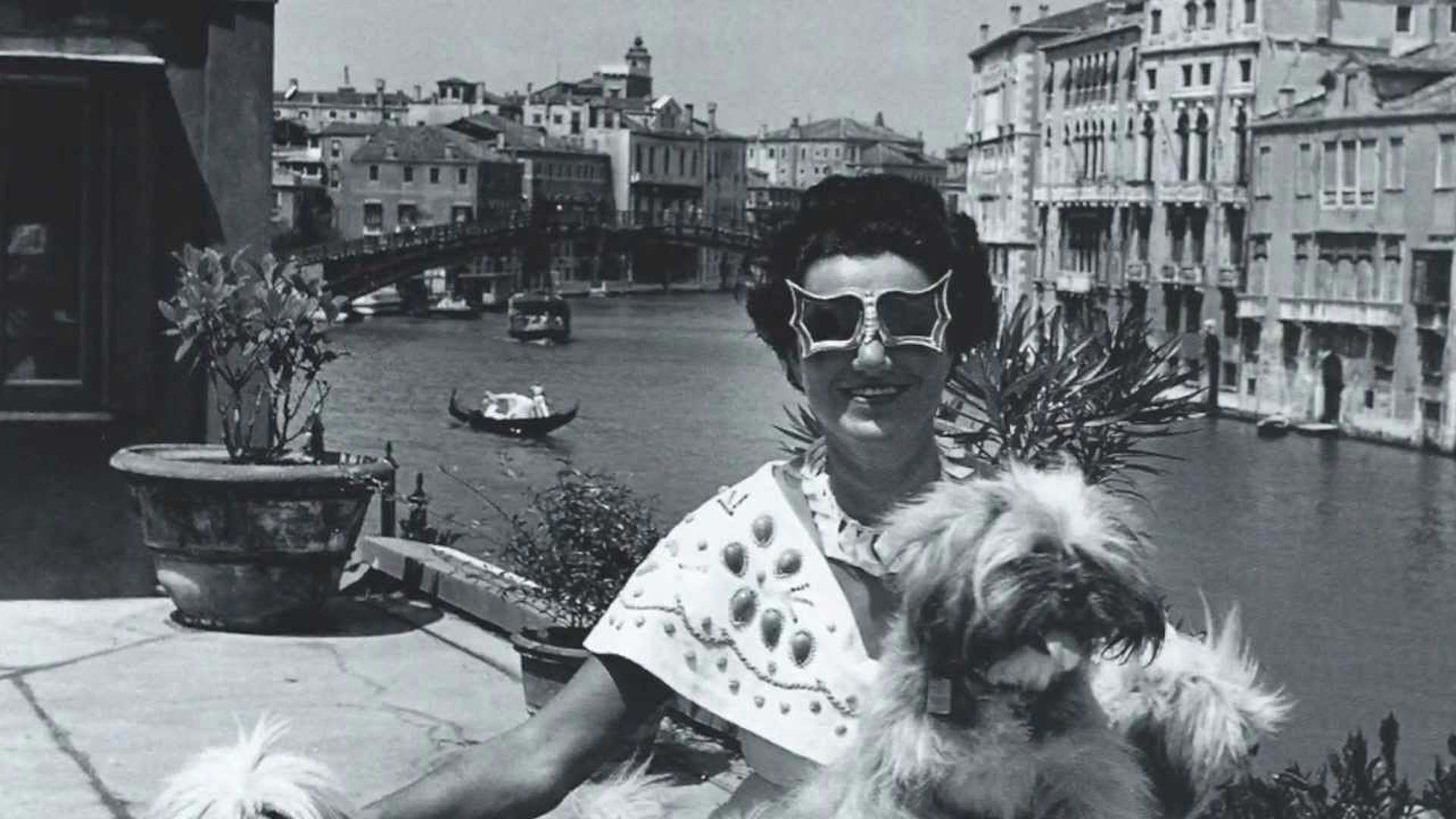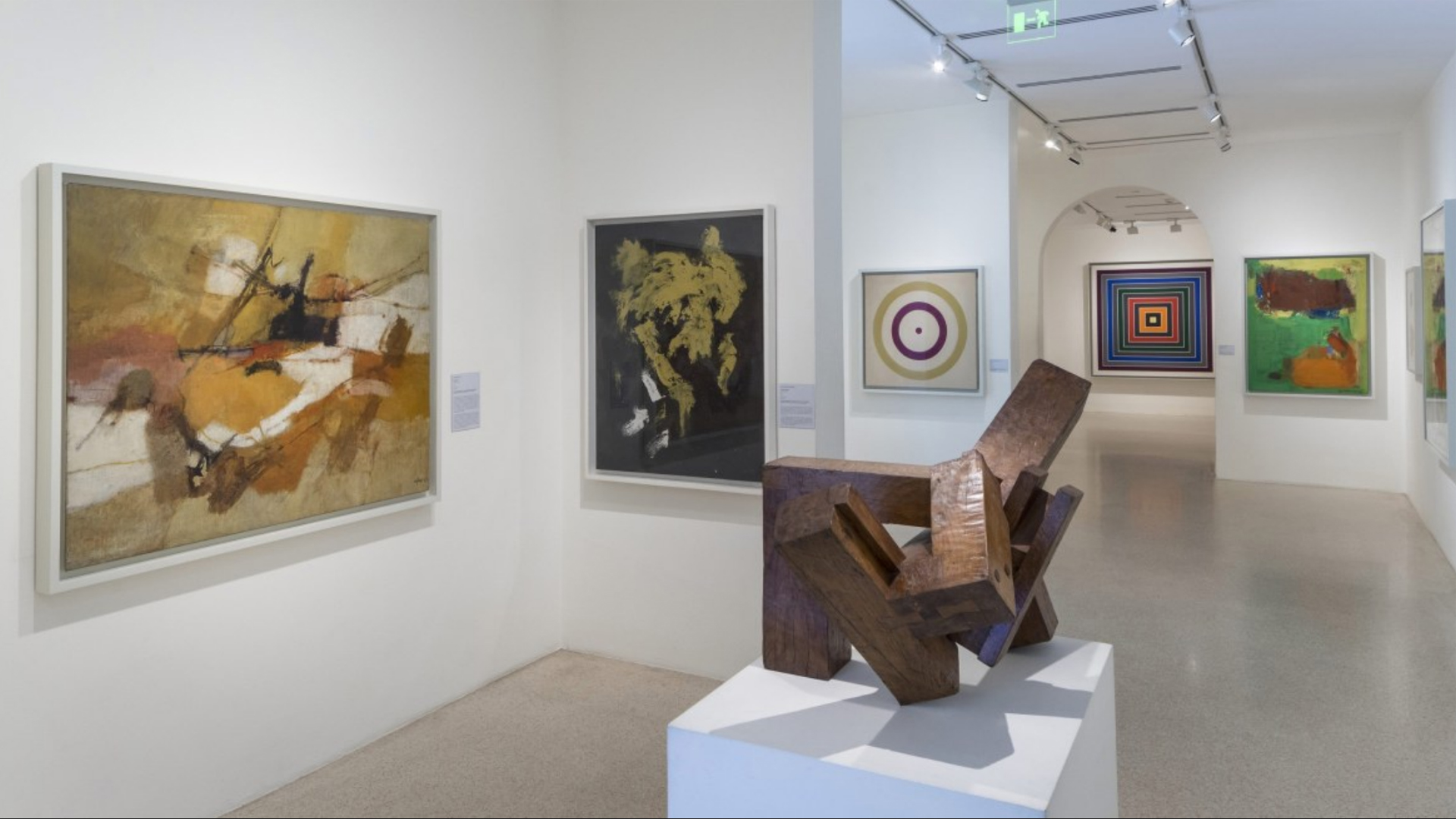“It has always been taken for granted that Venice is the ideal city for a honeymoon, but this is a serious mistake. To come to Venice, or simply to visit it, is to fall in love with it, and in the heart, there is no room left for anything else.” This is a passage from A Life for Art, the autobiography of Marguerite, better known as Peggy Guggenheim, the multi-billionaire American heiress. You may know her legacy as a visionary and art collector, but details of her place in the art world reveal her critical role. Guggenheim’s singular career spanned the modern era, linking the Dada and Surrealist movements with Abstract Expressionism. She famously championed artists such as Vasily Kandinsky, Jackson Pollock, Marcel Duchamp, Yves Tanguyher, and Man Ray and her two marriages were to Dadaist Laurence Vail and Surrealist Max Ernst, both unknown artists at the time she met them.

As a Venetian resident for the last 30 years of her life, Guggenheim was one of the city’s most celebrated patrons and eccentrics who lived in the Palazzo Venier dei Leoni on the Grand Canal. She is buried in the mansion’s garden, and the building is now home to the Peggy Guggenheim Collection, one of the most important museums for European and North American art of the first half of the 20th century in Italy. The 2020 exhibit, “Peggy Guggenheim: The Last Dogaressa,” underscored the prominent role she exercised in those years in the enchanting lagoon, a role that still makes her an icon today.

Her life story is one of passion that could be turned into a magnetizing screenplay. Born in New York City in 1898, her father, a businessman from Philadelphia, died aboard the Titanic on April 15, 1912. Her uncle Solomon R. Guggenheim founded the Guggenheim Foundation with artist Hilla Rebay as its curator and director in 1937. “The art collection that Solomon R. Guggenheim (1861–1949) gave to his Foundation, between 1937 and his death in 1949, numbered hundreds of artworks from the most vibrant and dynamic styles of European modernism, including over 150 works by Russian artist Vasily Kandinsky. The museum that bears his name was made possible by his inspired collecting of the art of his time”, says the Guggenheim Museum. After several years of increasing attendance for the Museum of Non-Objective Painting, Guggenheim and Rebay commissioned Frank Lloyd Wright to design what became the Guggenheim Museum on a lot they owned on Fifth Avenue in New York City. Wright’s iconic spiral design opened to the public in 1959.

Inspired by such an iconic family member, Peggy fell in love with art. She left the United States and traveled throughout Europe, but after experiencing many different and stimulating artistic circles, she grew tired of the art gallery business. When she arrived in Venice, Peggy was already a powerful lady in the contemporary art world. Her career as an art owner and collector had begun in 1938 with the opening of her first art gallery in London. Her friendships also belonged fully to the art world: she had already befriended Brancusi, Duchamp, and the writer Samuel Beckett, all of whom incited her to devote herself to contemporary art because it was a “living thing.”
After her London experience and her personal goal of buying one painting a day, she opened another gallery in New York City in 1942. But in 1948, she embarked on a new chapter in her career: museum owner. She relocated to Venice and displayed her collection in La Biennale, the Italian cultural institution dedicated to protecting different artistic expressions. Her collection helped re-establish the exhibition series after WWII. Many of the artists she championed had never been exhibited in the Giardini, and one pavilion that year was specifically dedicated to artists repudiated by the Nazis. A few years later, Peggy also acquired the 18th-century Palazzo Venier dei Leoni to house her incredible art collection.

In her book “Out of This Century: Confessions of an Art Addict”, Guggenheim described her sensorial experience of living in Venice, “In summer with daybreak the rising sun produces such a tender magic on the water that it nearly breaks one’s heart. As the hours progress the light becomes more and more violent until it envelops the city with a diamond-like haze. Then it commences slowly to sink into the magic sunset, the capolavoro of the day. This is the moment to be on the water. It is imperative. The canals lure you, call you, cry to you to come and embrace them from a gondola. . . . Day after day one is drawn from terraferma to float in the lagoon, to watch the sunset, or to go gently past the palaces seeing their images reflected in the canal. The reflections are like paintings more beautiful than any painted by the greatest masters. . . . If anything can rival Venice in its beauty, it must be its reflection at sunset in the Grand Canal.” Before she died, Peggy Guggenheim donated her Venetian collection to the Solomon Guggenheim Foundation, which also includes New York City’s Solomon R. Guggenheim Museum and the Guggenheim Museum in Bilbao, Spain.
Barbara Benzoni
Barbara Benzoni was born in Milan and lives between Rome and Tuscany. She is devoted to USA, the land of courage and innovation. She’s Peter's super-lucky mum and Ale's wife. Cinema, art, good food and only beautiful things are the themes of her existence. With a degree in Italian literature and a Masters in Sports Management she can both enjoys books and basketball matches. In 25 years she has been organizing sport events all over the world and she’s been lucky enough to meet the greatest champs ever. Curiosity in everyday life and people are her drivers. Her personal icon is Mohammed Ali : "It's not bragging if you can back it up".

